Complete Guide to Solar Energy Battery Storage in 2025
Solar energy is rapidly transforming the way we power our homes and businesses. In 2025, the global solar energy storage battery market is valued at approximately USD 6.84 billion and is projected to reach around USD 48.14 billion by 2034, growing at a compound annual growth rate (CAGR) of 24.23% . This growth is driven by the increasing demand for reliable and sustainable energy solutions.

Battery storage systems allow users to store excess solar energy generated during the day for use at night or during power outages. This capability enhances energy independence, reduces electricity bills, and contributes to a more resilient power grid. With advancements in technology, modern batteries now come with longer lifespans and improved efficiency, making them a worthwhile investment for many.
If you want to know complete details about maintenance cost then please visit Solar Panel Maintenance.
What is Solar Energy Battery Storage?
Solar battery storage systems allow you to store excess energy generated by solar panels for later use. These batteries capture the solar energy produced during the day and provide power when the sun isn’t shining. In 2025, these systems are more efficient and affordable than ever, making them a great addition to any home or business.
With a solar battery, you can store energy to use at night or during power outages. This increases energy independence and reduces reliance on the grid. As technology improves, solar batteries now last longer and offer better performance, ensuring your solar investment continues to pay off.
How Does Solar Battery Storage Work?
Solar battery storage systems work by capturing excess electricity from solar panels during the day. This energy is stored in the battery for later use, like at night or on cloudy days. The stored energy can then be drawn from the battery when needed.
The process starts when sunlight hits the solar panels, generating electricity. The solar inverter converts the DC power to AC power, which is then either used immediately or stored in the battery. When demand for electricity increases, the stored energy is used to power your home or business.
Why Invest in Solar Battery Storage for Your Home or Business?
Solar battery storage helps you save on electricity bills by storing excess energy for later use. It reduces reliance on the grid, lowering monthly costs. With solar energy prices rising, this investment becomes even more valuable in 2025.
Solar batteries also provide backup power during outages. This ensures your home or business stays powered when the grid fails. With improved technology, these systems are reliable and offer long-term savings.
| Battery Type | Average Cost (2025) | Lifespan | Efficiency | Best for |
|---|---|---|---|---|
| Lithium-Ion | $6,000 – $10,000 | 10-15 years | 90-95% | Homes and businesses |
| Lead-Acid | $3,000 – $5,000 | 5-7 years | 80-85% | Smaller, budget systems |
| Saltwater | $4,500 – $7,000 | 8-10 years | 80-90% | Eco-friendly options |
| Flow Batteries | $10,000 – $20,000 | 10-20 years | 70-85% | Commercial use |
Key Benefits of Solar Battery Storage in 2025
Solar battery storage helps you maximize the value of your solar energy by storing excess power for later use. This reduces your reliance on the grid, saving you money on electricity bills. With the technology improving in 2025, solar batteries are more efficient and affordable than ever.

Another key benefit is backup power during outages. Solar batteries provide a reliable energy source when the grid fails, ensuring your home or business stays powered. Additionally, solar batteries help reduce your carbon footprint by enabling you to use clean, renewable energy even when the sun isn’t shining.
Types of Solar Batteries – Choosing the Right Option for Your Needs

Lithium-Ion Batteries
Lead-Acid Batteries
Saltwater Batteries
Flow Batteries
Lithium-Ion vs. Lead-Acid – Which Solar Battery is Best?
For most users, Lithium-Ion batteries are the better choice due to their higher efficiency, longer lifespan, and smaller footprint, despite the higher initial cost. Lead-Acid batteries, while cheaper, may require more frequent replacements and maintenance.
| Feature | Lithium-Ion Batteries | Lead-Acid Batteries |
|---|---|---|
| Efficiency | 90-95% | 80-85% |
| Lifespan | 10-15 years | 5-7 years |
| Upfront Cost | Higher | Lower |
| Weight | Lightweight | Heavier |
| Maintenance | Low maintenance | Higher maintenance |
| Best For | Homes & businesses with higher energy demands | Budget-conscious, smaller systems |
| Technology | Advanced, more reliable | Older, less efficient technology |
How Much Does Solar Battery Storage Cost in 2025?
In 2025, solar battery storage systems typically cost between $6,000 and $19,000, depending on size and type. Lithium-ion batteries are more efficient and last longer but are pricier. Lead-acid batteries are cheaper but have a shorter lifespan and lower efficiency.
Costs can also vary based on installation complexity and your location. Despite the initial cost, solar battery storage offers long-term savings by reducing electricity bills and providing energy independence.
| Battery Type | Average Cost (USD) | Typical Capacity | Best For |
|---|---|---|---|
| Lithium-Ion | $10,000 – $19,000 | 10–20 kWh | Homes & businesses seeking efficiency and long lifespan |
| Lead-Acid | $6,000 – $12,000 | 5–10 kWh | Budget-conscious users with smaller energy needs |
| Saltwater | $7,000 – $15,000 | 10–15 kWh | Environmentally conscious consumers |
| Flow Batteries | $15,000 – $25,000+ | 20–40 kWh | Large-scale commercial applications |
Understanding the Cost of Solar Battery Installation
In 2025, installing a solar battery system typically ranges from $6,000 to $19,000, including both equipment and labor . The total cost varies based on factors such as battery type, capacity, and installation complexity.
Key Cost Components
Financial Incentives
Homeowners can benefit from a 30% federal tax credit on the total installation cost, significantly reducing out-of-pocket expenses.
Solar Battery Storage and Energy Efficiency – A Winning Combination
Solar battery storage systems are a perfect match for maximizing energy efficiency. By storing excess solar energy during the day, you can use it at night or during peak energy demand times. This helps reduce reliance on the grid, lowering electricity bills while still using clean, renewable energy.
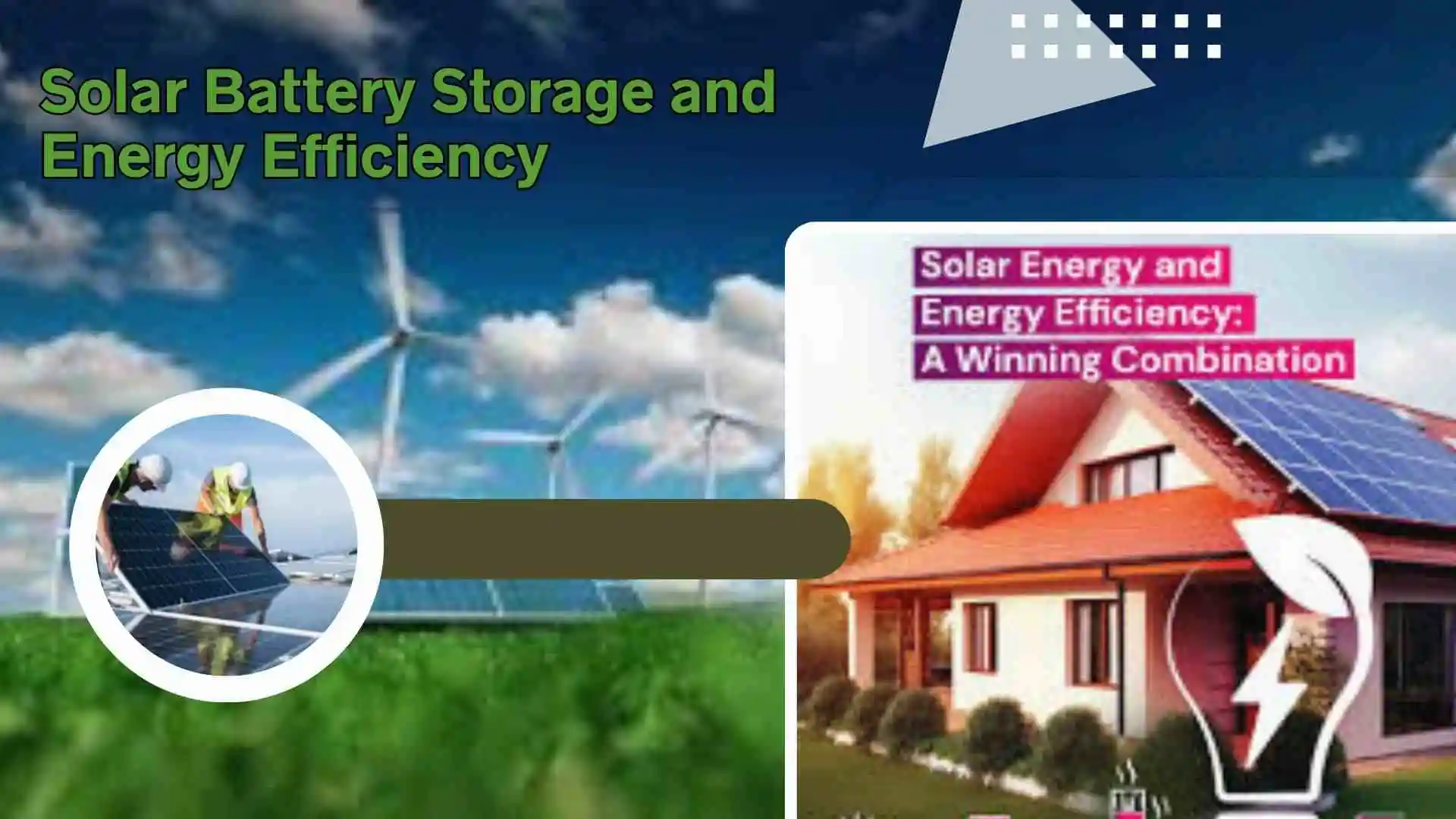
With a solar battery, your home or business can operate more efficiently. You’re not only saving money on your energy bills, but you’re also helping to stabilize the grid. Solar battery storage increases your energy independence, ensuring that you’re using stored solar power instead of drawing from the grid when electricity rates are higher. This combination leads to long-term savings and a more sustainable energy future.
How Solar Batteries Can Maximize Your Energy Independence
Solar batteries increase energy independence by storing excess solar power for later use. Instead of relying on the grid, you can use your own clean energy at night or during power outages.
By capturing energy during the day, solar batteries ensure you have a constant power supply whenever needed. This helps reduce electricity bills and gives you more control over your energy usage.
| Aspect | Benefit |
|---|---|
| Energy Storage | Store excess solar energy for use during non-sunny hours or outages. |
| Reduced Grid Dependency | Decrease reliance on external energy sources, especially during peak hours. |
| Cost Savings | Lower electricity bills by using stored energy instead of buying from the grid. |
| Power During Outages | Keep your home or business running when the grid goes down. |
| Control Over Energy Use | Gain more control and flexibility over your energy consumption. |
How Long Do Solar Batteries Last?
Solar batteries typically last between 5 to 15 years, depending on the type and usage. Lithium-ion batteries tend to have a longer lifespan, often lasting up to 15 years, while lead-acid batteries may only last around 5 to 7 years.
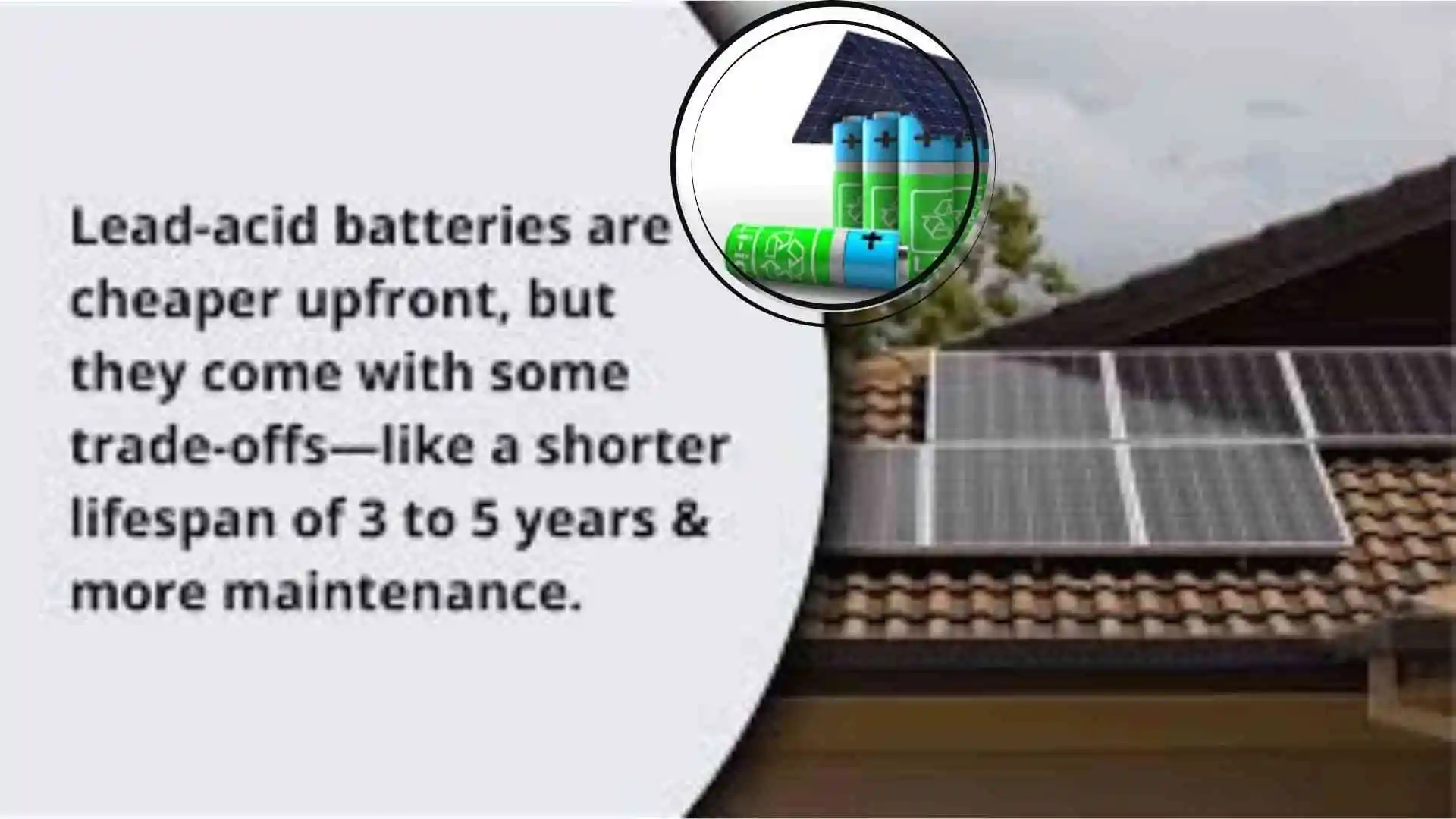
The lifespan of a solar battery is also influenced by factors like the number of charge and discharge cycles, the climate, and how well the system is maintained. Over time, a battery’s capacity will gradually decrease, but regular maintenance and proper care can help maximize its efficiency and lifespan.
| Battery Type | Typical Lifespan | Factors Affecting Lifespan | Maintenance Needs |
|---|---|---|---|
| Lithium-Ion | 10-15 years | Charge/discharge cycles, temperature, maintenance | Low maintenance, regular checks |
| Lead-Acid | 5-7 years | Frequent cycling, high temperatures, poor maintenance | Higher maintenance, monitoring |
| Saltwater | 8-10 years | Temperature, number of cycles, proper storage conditions | Moderate maintenance |
| Flow Batteries | 10-20 years | Consistent use, temperature control, maintenance | Low maintenance, robust design |
Factors That Affect the Lifespan of Solar Batteries
The lifespan of a solar battery is influenced by several factors, starting with the number of charge and discharge cycles. Each time a battery is charged and then discharged, it wears down slightly. Batteries that are used more frequently or are deeply discharged may degrade faster.
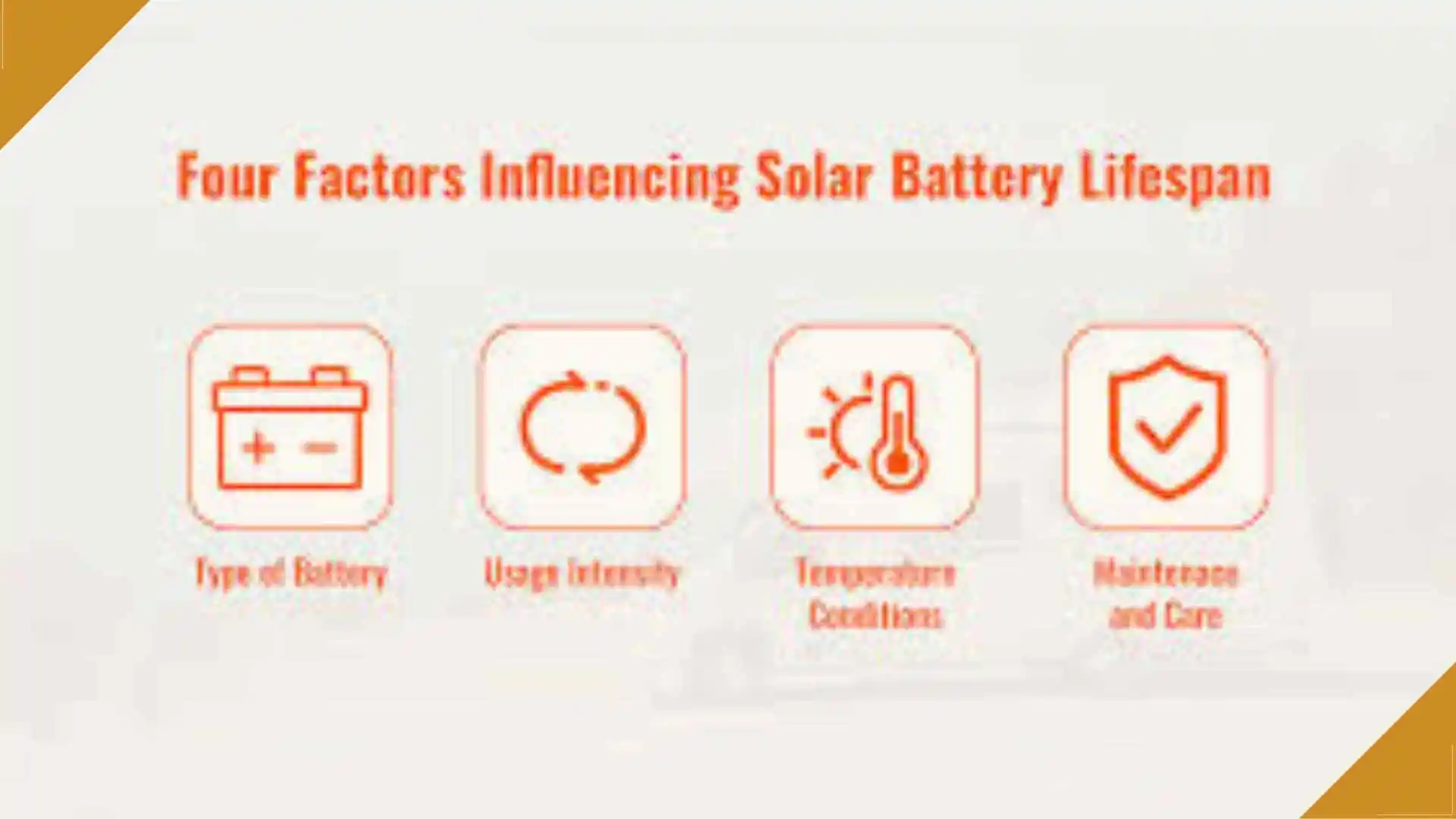
Temperature also plays a significant role in the lifespan of solar batteries. Extreme heat or cold can reduce battery efficiency and shorten its life. Finally, proper maintenance is crucial. Regular checks, cleaning, and ensuring the system is operating within recommended guidelines can help extend the battery’s lifespan.
| Factor | Impact on Lifespan | How to Improve |
|---|---|---|
| Charge/Discharge Cycles | More cycles reduce lifespan; deeper discharges wear faster | Avoid deep discharges and limit frequent cycling |
| Temperature | High heat or extreme cold can shorten battery life | Store batteries in a temperature-controlled space |
| Maintenance | Poor maintenance accelerates wear and reduces efficiency | Perform regular checks, cleaning, and proper care |
| Battery Type | Different types have varying lifespans (e.g., lithium-ion vs. lead-acid) | Choose the right battery for your needs and usage |
Top Solar Battery Storage Systems in 2025
In 2025, top solar battery systems like the Tesla Powerwall 3 offer 13.5 kWh of storage with features like app monitoring. The Enphase IQ Battery 5P is great for Enphase system users, while the LG Chem RESU 16H Prime provides higher capacity and a long warranty.
Other options like the FranklinWH aPower2 offer high efficiency with over 4,000 cycles, and the Sonnen Eco 10 focuses on smart energy management. Choosing the right system depends on your energy needs, space, and budget.
| Battery Model | Capacity | Key Features | Best For |
|---|---|---|---|
| Tesla Powerwall 3 | 13.5 kWh | App monitoring, integrated inverter, scalable | Homeowners seeking integration |
| Enphase IQ Battery 5P | 10.08 kWh | Modular, AC-coupled, compatible with IQ8 | Existing Enphase system users |
| FranklinWH aPower2 | 13.6 kWh | 4,000+ cycle life, app-based monitoring | High cycle longevity needs |
| LG Chem RESU 16H Prime | 16 kWh | High efficiency, compact design | Homes with space constraints |
| Sonnen Eco 10 | 10 kWh | Smart energy management, eco-friendly | Users interested in energy communities |
Best Solar Battery Storage Solutions for Residential Use
The Tesla Powerwall 3 is a top choice for homes, offering 13.5 kWh of storage and easy app monitoring. It’s perfect for reliable energy storage and backup power during outages.
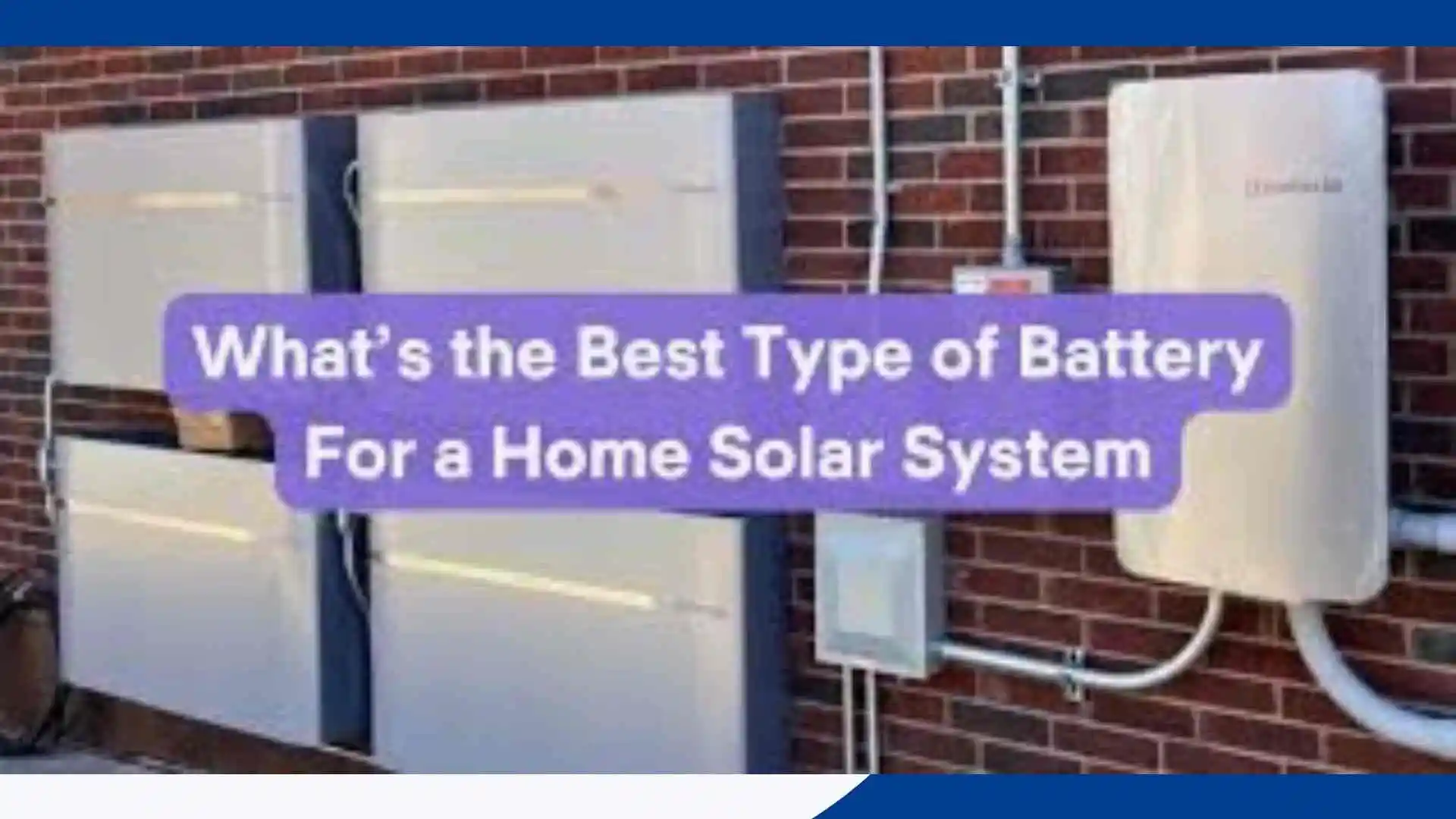
The LG Chem RESU 16H Prime provides 16 kWh of storage with high efficiency, ideal for homes with larger energy needs. For budget-conscious homeowners, the Enphase IQ Battery 5P offers modular, AC-coupled storage, great for existing solar systems.
Best Solar Battery Storage Solutions for Businesses
For businesses, the FranklinWH aPower2 offers excellent performance with its 13.6 kWh capacity and over 4,000 cycles. It’s perfect for companies that need high efficiency and long-lasting storage.
The Sonnen Eco 10 is another great option, providing 10 kWh of smart energy management and eco-friendly features. It is ideal for businesses focused on sustainability and energy independence. Additionally, the Tesla Powerwall 3 can also work well for businesses needing reliable backup power and scalable energy storage.
What to Consider Before Installing a Solar Battery Storage System?
Before installing a solar battery storage system, it’s important to assess your energy needs. Consider how much energy your home or business uses daily and whether the battery can meet those needs. The capacity of the system plays a big role in how much energy can be stored for later use.
Another key factor is the location and installation costs. Installation may require specific adjustments to your existing solar system or electrical setup. Be sure to factor in any additional costs, including permits or labor. Additionally, consider the battery type that best suits your requirements in terms of lifespan, efficiency, and budget.
| Factor | What to Consider | Why It’s Important |
|---|---|---|
| Energy Needs | Assess daily energy usage and peak demand. | To determine the appropriate battery capacity for your needs. |
| Battery Capacity | Choose a system with enough capacity to store excess energy. | Ensures that you have enough stored energy for use during off-hours or outages. |
| Installation Costs | Consider both upfront costs and additional setup or upgrades. | Costs vary depending on system size, location, and installation complexity. |
| Battery Type | Decide between lithium-ion, lead-acid, or other types of batteries. | Different types offer varying lifespans, efficiencies, and costs. |
| Location | Ensure there’s space for the battery and easy access for maintenance. | Proper placement affects performance and ease of maintenance. |
Are Solar Battery Storage Systems Right for You?
Solar battery systems help reduce energy costs and provide backup power. If you want to store excess energy for later use, they can be a smart investment.
However, if you use little energy or don’t need backup power, they might not be worth the cost. Evaluate your energy needs and budget before deciding if it’s the right solution.
Solar Battery Storage and Sustainability – A Green Solution for the Future
Solar battery storage is a key component in creating a more sustainable energy future. By storing excess solar energy, you can reduce reliance on fossil fuels and lower your carbon footprint. This helps decrease greenhouse gas emissions, contributing to a cleaner environment.

Using solar batteries also supports renewable energy use even during non-sunny hours. It’s a step toward a greener, more efficient energy system, helping reduce overall energy consumption and promoting a more sustainable lifestyle.
How Solar Batteries Contribute to a Greener Future
Solar batteries help reduce our reliance on fossil fuels by storing clean, renewable energy for later use. This means less dependence on non-renewable energy sources, lowering carbon emissions and helping fight climate change.
By using solar batteries, we can ensure that solar power is used even when the sun isn’t shining. This contributes to a more sustainable, eco-friendly energy system that reduces waste and encourages the use of green energy.
| Contribution | Impact |
|---|---|
| Reduced Fossil Fuel Dependence | Storing solar energy reduces the need for electricity from fossil fuels. |
| Lower Carbon Emissions | Solar batteries reduce greenhouse gas emissions by using clean energy. |
| Energy Efficiency | Maximizes the use of solar energy and reduces waste. |
| Sustainable Energy System | Promotes the use of renewable energy, making the grid more eco-friendly. |
Troubleshooting Solar Battery Storage Systems – Common Issues & Solutions
Solar battery storage systems may face a few common issues, but most are easy to troubleshoot. One common problem is battery not charging properly. This can be due to a faulty inverter or poor sunlight exposure. Ensure the system is getting enough sunlight and check for any wiring issues.
Another issue is battery performance degradation over time. If the battery isn’t storing energy efficiently, it may be nearing the end of its lifespan. Regular maintenance, such as cleaning and checking the battery’s condition, can help prolong its life. If the problem persists, it may be time to replace the battery.
How to Maintain Your Solar Battery for Optimal Performance
To keep your solar battery performing well, regular cleaning is essential. Dust and debris can block sunlight or affect the battery’s efficiency. Use a soft cloth to gently clean the solar panels and ensure they’re free of dirt.
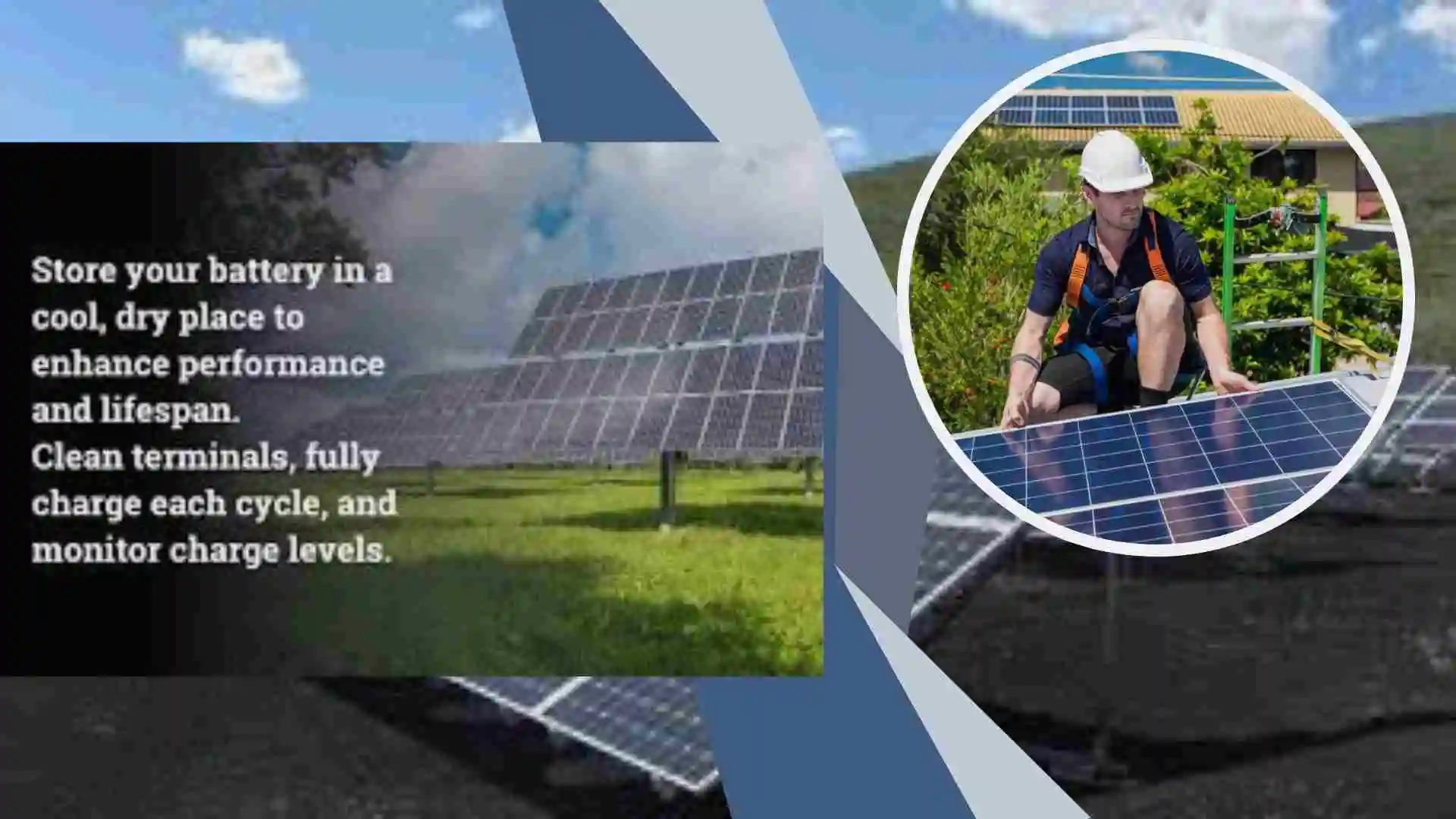
It’s also important to monitor the system’s health regularly. Check the battery’s charge level, and ensure it’s not overcharging or discharging too much. Keeping an eye on the system helps catch potential issues early, extending the lifespan of your solar battery. Lastly, ensure proper ventilation to prevent overheating and maintain efficiency.
| Maintenance Task | Description | Frequency |
|---|---|---|
| Clean Solar Panels | Remove dust and debris from panels using a soft cloth. | Every 2-3 months |
| Check Battery Charge Levels | Ensure the battery is not overcharging or discharging too much. | Monthly |
| Inspect System Health | Regularly check the battery and inverter for any signs of wear or malfunction. | Every 6 months |
| Ensure Proper Ventilation | Make sure the battery is not overheating and has adequate airflow. | Ongoing (check regularly) |
Future Trends in Solar Battery Storage (2025 and Beyond)
As we move into 2025, solar battery storage will see major improvements in efficiency, cost, and integration. Advanced technologies like sodium-ion and solid-state batteries are emerging, promising safer, more affordable, and more efficient energy storage options.

Integration with smart grids will allow for better energy management, while global expansion and policy support will make solar batteries more accessible. Additionally, enhanced battery recycling will promote sustainability, and the cost of solar batteries will continue to fall, making them more accessible to homeowners and businesses alike. These trends will drive the future of energy storage, contributing to a greener, more sustainable world.
Innovations to Watch in Solar Battery Storage
Several innovations in solar battery storage are shaping the future. These advancements focus on increasing efficiency, safety, and sustainability.
Solid-State Batteries
Solid-state batteries use a solid electrolyte instead of a liquid. They offer higher energy densities and better safety. Companies like QuantumScape aim to make this technology commercially available by 2026.
Sodium-Ion Batteries
Sodium-ion batteries are cost-effective and environmentally friendly. They perform well in low temperatures and have long lifespans. Research is focused on improving their charging speed and efficiency.
Second-Life EV Battery Storage
Used electric vehicle (EV) batteries are being repurposed for energy storage. Companies like Redwood Materials are leading this trend, providing sustainable solutions for both EVs and solar energy.
Floating Solar and Storage Systems
Floating solar panels are combined with storage systems on water. These systems benefit from cooling effects, improving efficiency and offering space-saving solutions.
These innovations are making solar battery storage more efficient, affordable, and sustainable.
Conclusion
Solar battery storage systems are becoming essential in today’s energy landscape. As we move into 2025, these systems are more efficient, affordable, and sustainable than ever before. With advancements in technology, including solid-state and sodium-ion batteries, energy storage is becoming safer and more accessible to homeowners and businesses alike.
Investing in solar battery storage offers many benefits, such as lower electricity bills, increased energy independence, and reliable backup power during outages. As these systems become more integrated with smart grids and global policies support renewable energy, we are moving towards a greener, more sustainable future. By staying informed about the latest trends and innovations, you can make an informed decision on the best solar storage solution for your needs.
